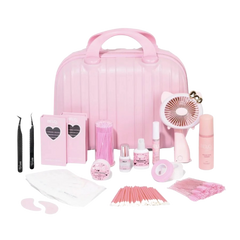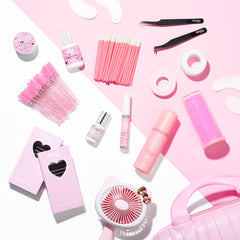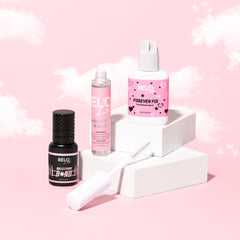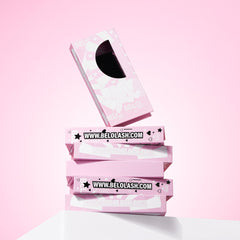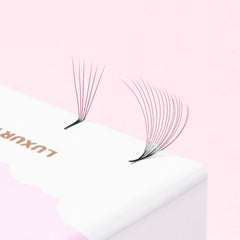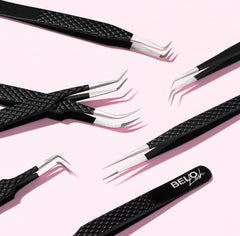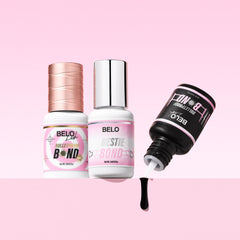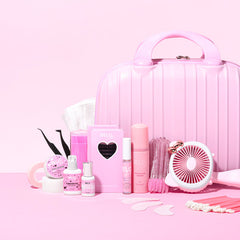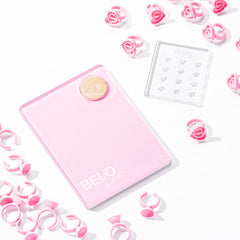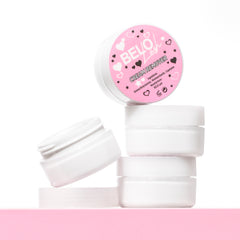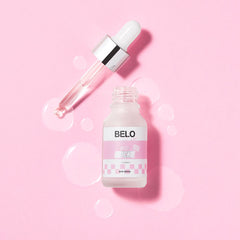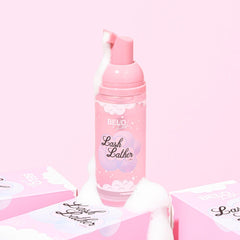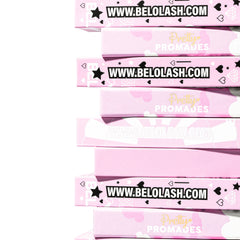Everyone wants long, luscious lashes, but we weren't all born with them.
Fortunately, we can fake it with false lashes!
As a lash tech, you can turn your client's dream look into a reality using your skills and the right lash extensions.
But do you know that part of giving your clients their dream lash look is advising them about what type of extensions will suit them best? This is why you need to know what lash extensions are made of, the pros and cons of different materials, and which types create the best results.
BELO babes, here’s the lash lowdown on synthetic, silk, and mink.
Synthetic Lash Extensions
Synthetic lash extensions are the most common and widely used option. They are made from polybutylene terephthalate (PBT) or polyester and are designed to mimic the look and feel of natural lashes. At BELO, our stunning eyelash extensions are made from lightweight, high-quality Korean PBT material that feels like silk, cashmere, and mink—all rolled into one!
Pros
-
Synthetic extensions are exceptionally durable and long-lasting if properly cared for.
-
They are budget-friendly as their fibres are cheaper than silk or mink.
-
Their flexibility means you can curl and shape them according to the natural lash line.
-
They come in many varieties, with lengths, curls, and thicknesses to suit any style.
-
Shinier, glossier, and more dramatic than mink or silk.
-
Synthetic lashes hold their curl well.
-
They suit everyone as they can be used for volume or to enhance a natural look.
-
Low maintenance.
-
Allergy-friendly due to their hypoallergenic materials.
-
Water-resistant.
-
Extremely customisable.
Cons
-
If they’re from a budget brand, they don’t look as natural as other types - so stick to BELO!
-
The cheaper varieties can look a little too shiny.
Silk Lash Extensions
Although they’re called “silk” lashes, these lashes are typically made of synthetic fibres designed to imitate natural silk's luxurious shine and softness. Their lightweight nature makes them comfortable to wear while providing a glamorous yet natural finish.
Pros
-
Lightweight, making them more comfortable for clients with sensitive or fine natural lashes.
-
They have a feathery feel and look that blends well with natural lashes.
-
They have a matte finish, which suits people seeking an understated look.
-
They conform well to the lash line’s natural curve.
-
Silk lashes are versatile and easily adaptable for a range of styles.
-
They come in a vast range of lengths and thicknesses.
-
Water-resistant.
-
Hypoallergenic.
Cons
-
Silk lash extensions are more expensive than synthetic ones.
-
They are less durable as they shed and break more easily than synthetic lashes.
-
The term "silk" is often a marketing trick, so you should always ensure you're using a reputable high quality brand.
-
Clients who love a high-shine, dramatic look might find them less striking.
Mink Lash Extensions
There are two types of mink lashes: actual mink from the little Chinese/Siberian rodent and faux mink. Most people would be horrified to think that their gorgeous lash extensions are made of the fur of a sweet little animal. However, manufacturers collect the fur by brushing their coats, so environmentalists can rest easy because they don't harm animals.
Still, many people believe humans shouldn't traumatise animals and should leave them alone in their natural habitats. For this reason, you can buy lash extensions made of faux mink that copycats real mink fur, which is soft, silky, and very fine.
Pros
-
Faux mink holds its curl when wet.
-
These lash extensions feel like natural eyelashes.
-
They are relatively long-lasting if properly maintained.
-
They don’t twist or drop, making them hard-wearing.
Cons
-
More expensive.
-
They take longer to apply because of the fine fibres.
-
Real mink has a higher allergy risk and is not ideal for those with sensitive eyes.
-
Ethical concerns regarding lash extensions made of real mink fur.
-
Less suited to a glamourous look requiring high-volume.
Other Types of Lash Extensions
Generally, most lash extensions are made of synthetic, silk, or (faux) mink, but there are a few other varieties, including:
-
Cashmere fibres: Cashmere lash extensions are made of very soft synthetic fibres, making them more comfortable and boasting excellent retention. They are also blacker, lighter, and have thinner tips.
-
Human hair: Some lash extensions are made from sterilised human hair. These lashes look incredibly natural (because they are!). However, they are expensive and may not be easy to source ethically.
The Best Choice Is BELO
Now that you know the answer to "What are lash extensions made of?” You can see that it’s about so much more than just materials; it’s about finding a product that looks and feels natural, is lightweight, and cruelty-free.
BELO’s fabulous, high-quality Korean PBT material is the best of all lash types. Every lash has just the right amount of shine and can be curled without damage to create a natural look or one with the volume dialled up high! Our lashes are lightweight, so they’re gentle on your natural lashes and don’t make them feel weighed down.
From Classic to Russian, Volume, Cashmere, and Velvet, we’ve got lashes your clients will love, and you’ll love applying them too. Plus, you can confidently tell your clients exactly what they’re made of, and you never have to worry about not being cruelty-free.

